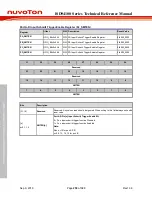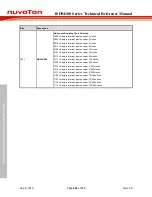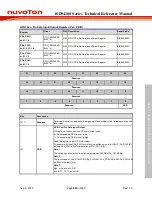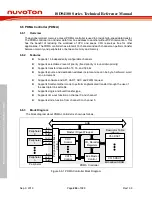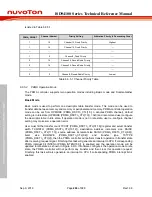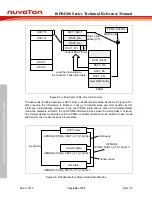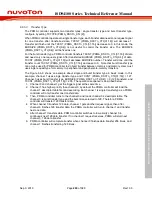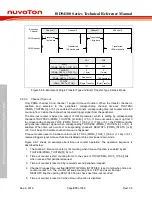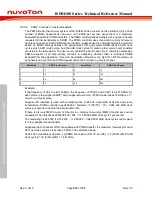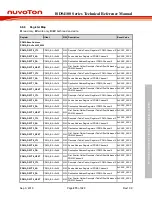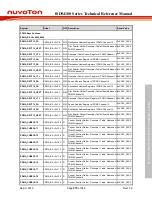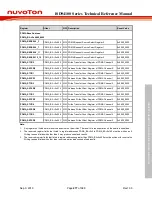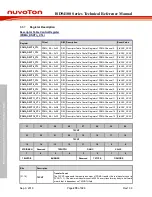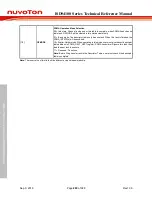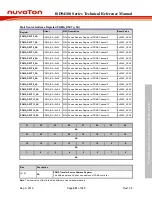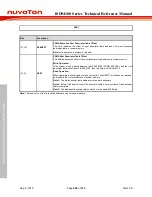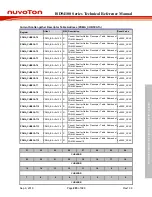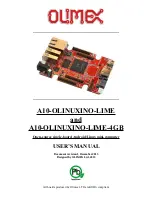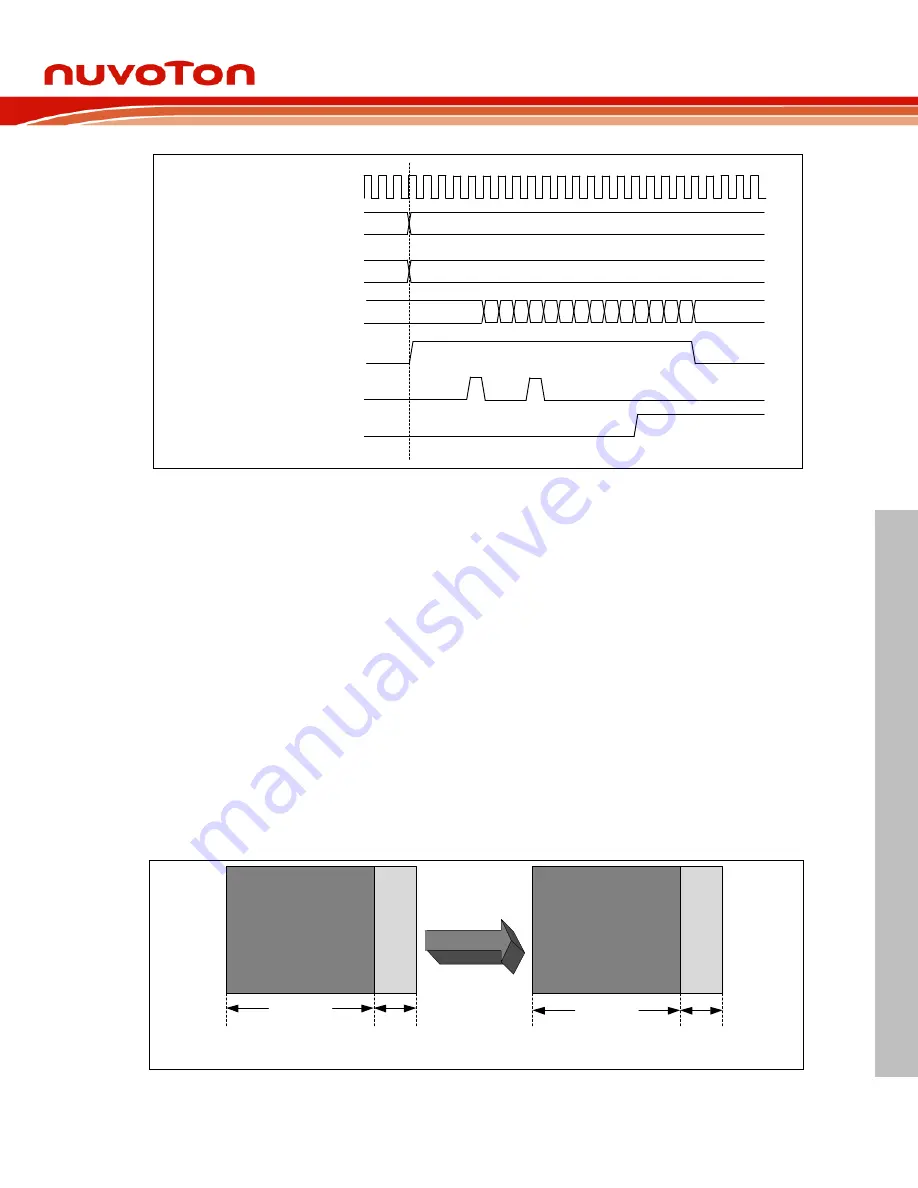
ISD94100 Series Technical Reference Manual
Sep 9, 2019
Page
271
of 928
Rev1.09
IS
D
9
410
0
S
ER
IE
S
T
E
C
HN
ICA
L
RE
F
E
RE
NCE
M
AN
U
AL
Time-out counter
TOC0
(PDMA_TOC0_1[15:0])
TOUTEN0
(PDMA_TOUTEN[0])
1 2 3 4 5 0 1 2 3
0
5
0 1 2 3 0
x
Peripheral request
REQTOF0
(PDMA_INTSTS[8])
Time-out clock
(HCLK/2^8)
TOUTPSC0
(PDMA_TOUTPSC[2:0])
0
Figure 6.6-7 Example of PDMA Channel 0 Time-out Counter Operation
6.6.5.5
Stride Function
The PDMA support channel 0 to channel 5 six channels with stride function. The stride function can
transfers data from one address to another address and can support block transfer with stride.
When operating in stride function, the transfer address can be fixed or incremented successively.
Setting STRIDE_EN (PDMA_DSCTn_CTL[15]) to enable stride function, and then write a valid
source address to the PDMA_DSCTn_SA register and a source address offset count to SASOL
(PDMA_ASOCRn[15:0]) register, a destination address to the PDMA_DSCTn_DA register and a
destination address offset count to DASOL (PDMA_ASOCRn[31:16]), and a transfer count to the
TXCNT (PDMA_DSCTn_CTL) register and a stride transfer count to STC (PDMA_STCn[15:0]).
Next, trigger the SWREQn (PDMA_SWREQ[5:0]). The DMA will continue the transfer until TXCNT
(PDMA_DSCTn_CTL) count down to zero. The Figure 6.6-8 shows the block transfer relationship
between source memory and destination memory. Stride function also supports peripheral to
memory or memory to peripheral transfer.
Please note that stride mode must be operated in burst mode (TXTYPE (PDMA_DSCTx_CTL[2])
= 0), and the transfer count (TXCNT (PDMA_DSCTx_CTL[31:16])) should be less than burst size
(BURSIZE (PDMA_DSCTx_CTL[6:4])), and STC (PDMA_STCRx[15:0]) must be greater than or
equal to 1.
Source Memory
Destination Memory
STC
STC
SASOL
DASOL
Figure 6.6-8 Stride Function Block Transfer


